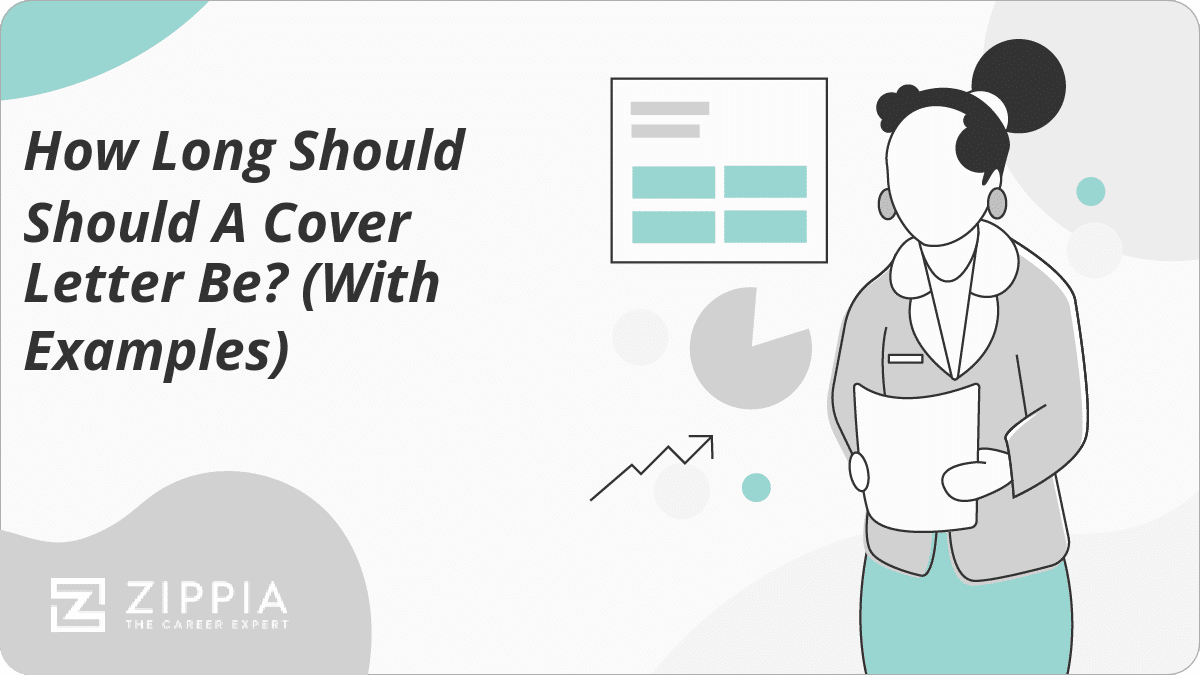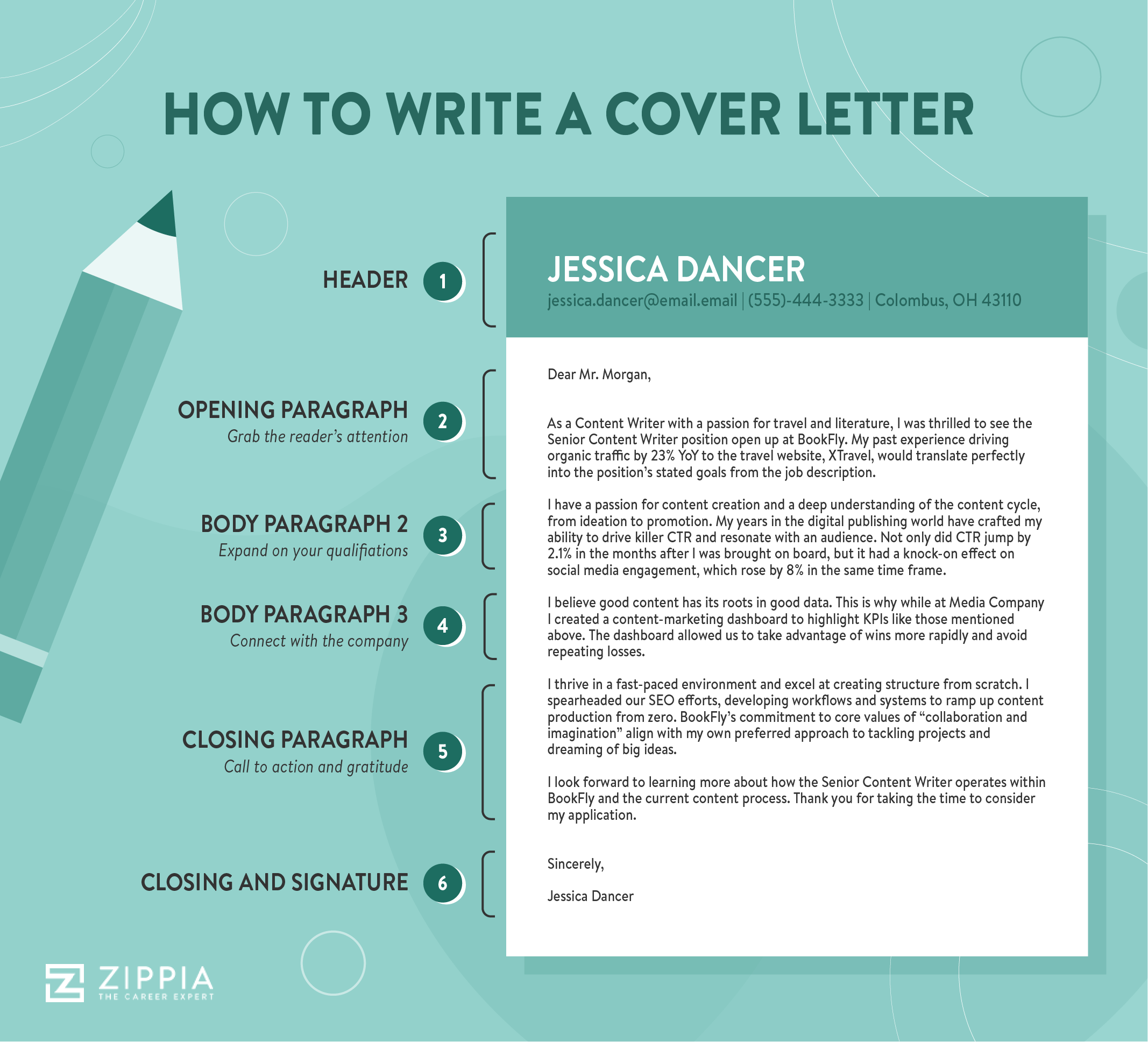How Long Should Should A Cover Letter Be? (With Examples)

Before we get into a bunch of advice on getting your cover letter to the proper length for most jobs, it should be clearly stated that your primary goal when applying for jobs is to show that you can follow instructions.
In this context, that means reading the job posting carefully for any details a company provides with regards to your cover letter. If they give you a prompt or questions to answer, then respond to them. If they provide instructions about word count or page length, do what they say and forget everything else you read here vis-a-vis length.
You only get one chance to make a first impression, and ignoring the instructions listed in a job posting is a surefire way to make a bad one.

How Long Should a Cover Letter Be?
So you’ve checked the job posting and they’ve requested a cover letter, but haven’t given any guidelines for how long it should be. Or maybe they’ve stated that a cover letter is optional. Should you still send one? Emphatically, yes, you should. As for how long you should make it, follow our guidelines below.
- Page count. In all circumstances, your cover letter should never exceed one page. Ideally, you should shoot for between half a page and a page, always aiming for the lower end of that spectrum. About 70% of employers want a half-page cover letter or feel that the shorter the better.
- Word count. Considering that preferred page count leaves us with about 200-400 words with 10 or 12-point font, single-spaced, with spaces between paragraphs. The shorter the better approach continues here; if you can say everything you need to in a 200-word cover letter, great! Stop right there and don’t worry that you’re being lazy or not including enough information. Up around a count of 400 words and your average hiring manager’s eyes are going to start glazing over, so, again, aim for the lower end of the spectrum and try to get your cover letter below 300 words.
- Paragraph count. The standard advice is to aim for between 3-6 paragraphs. Three is the absolute minimum to do the following: introduce yourself, state your qualifications, and express interest in the specific company. However, it may be a good idea to give yourself four paragraphs, so you have more time to tout your credentials. We don’t recommend going over 4 paragraphs in most scenarios, because otherwise, each paragraph is going to look super short if you’re working with ~300 words. Additionally, it shouldn’t take multiple paragraphs to introduce yourself, express interest in the company, or thank the reader for their consideration. That means you have 1-3 paragraphs left to state your qualifications. Honestly, if you’re not making a major career change and aren’t applying for a senior-level position, you should be able to sketch your relevant qualifications and attributes in one paragraph, two max.
What to Include In Your Cover Letter
No matter what job you’re applying for, cover letters follow a standard format. A pysical cover letter should include the following, in order:
- Date
- Employer’s Address
- Your address
- Greeting
- Body paragraphs
- Closing lines
- Sign-off
- Signature
For an email cover letter, you can omit the date and addresses. You also don’t need to actually sign it. However, if you can sign it and then scan it, it’s a nice touch.
Make sure to follow the employer’s directions for how you save your cover letter file. PDFs keep their formatting across devices and operating systems, making them a safe choice. However, if the employer specifically prohibits PDFs or requires a particular file type, like DOCX, follow those instructions.
How to Keep Your Cover Letter Concise
Great, you’re thinking, but how do I fit how awesome I am into such a tight length limit? Fear not; once you’ve broken down a cover letter into sections, it’s easy to say what needs saying efficiently.
- First paragraph. This may be the only paragraph a hiring manager will read in full; sad, but true. Make your opener countand get straight to the point: what job are you applying for, what do you know about the company, and how much experience do you have?
- Second paragraph. The meat of your cover letter, and your chance to show off. This is probably the part where people have the most trouble keeping things concise. The trick is to narrow down your greatness; what is the company looking for in a candidate for this position? Read the job posting, underline all verbs and industry-specific nouns. Then, try to use those same words when talking about your qualifications. Think: what about your work history, your skills, or accomplishments are most fitting for the specific job for which you’re applying. Whenever possible, include numbers to back up your claims. For instance, saying you provide great customer service is one thing, but showing evidence of that fact by stating you increased customer satisfaction by 17% is quite another. Failing that, including any awards, notable accomplishments, or special projects from your previous positions is going to look good here — as long as these have some relevance for your prospective job.
- Third paragraph. This is your chance to express interest in the company. Why do you want to work for them? Research the company so you know what sort of projects they’ve developed and what their future goals are. Don’t stop at simply mentioning that you know what the company is up to, though. Tell the hiring manager what you could do to further the company’s goals. It’s also appropriate to call back to your qualifications here: “I know I can be an asset in developing XYZ project successfully, because of my outstanding results with ABC project at [former employer].” Keep this question in mind while writing this paragraph: What value will you add to the company?
- Fourth paragraph. Your closing paragraphshould have three things: a reiteration of your interest in the position, a thank-you, and a call-to-action. Remind the reader why you’re perfect for the position and what you can offer the company, not what the company can offer you (e.g., don’t say you look forward to learning more skills — you should already have those skills!) Express gratitude for being considered for the position. People like polite people. A call-to-action is the strongest way to end your cover letter. Don’t come off as presumptuous and ask for an interview date. Simply state that you look forward to an opportunity to discuss the role and your suitability for it.
- More optional paragraphs. Your introduction and conclusion should always be just one paragraph. If you feel you need more than four paragraphs, do so by breaking your second and/or third paragraphs into two paragraphs. However, we strongly recommend keeping your cover letter to four paragraphs.
Cover Letter Examples
We’ve been discussing cover letter length in abstract terms so far. Let’s look at a couple of cover letter examples to see all this advice in practice:
Cover Letter Example 1:
Dear Ms. Macnamara, When I saw the NextMark was hiring a Marketing Manager, I knew I had to apply. With over 8 years of experience in the marketing industry, I have a wide breadth of knowledge and am eager to apply my skills to open up new and exciting business opportunities for NextMark. I currently work as a Marketing Manager at MyComp, where I developed a digital marketing campaign that saw revenue increase by 34% YoY. I accomplished this through various SEO efforts built on a backlinking campaign worth $2M and a content marketing strategy that saw organic traffic increase threefold in just under six months. Additionally, I’ve worked side-by-side with the sales and product teams to ensure customer satisfaction never fell below 98%. For the past 3 years, I’ve managed a budget of $5-7M, including brand management, product launches, and promotional materials. I’ve also designed new social media elements targeted at environmentally-conscious consumers that saw our new Green Line reach record profits. My proudest achievement has been turning our social marketing strategy into a few hundred subscribers to over a million, with engagement through the roof. My background of business acumen and marketing know-how is just what NextMark needs to take its new product launch to the next level. Thank you for considering my application, and I look forward to discussing the next steps. Sincerely,
Margaret Tanner
- Leveraged negotiation skills to increase up-selling and cross-selling of sister products, resulting in a 44% boost in customer lifetime value
- Exceeded sales quotas by a minimum of 20% each quarter since 2017
- Named “Top Salesperson” in March 2019 for making over $500,000 in sales, setting a new company-wide record for junior sales staff
Tips for Cover Letter Length
- Don’t be afraid of white space. You may think your cover letter looks sort of bare with four short paragraphs taking up just half a page. Don’t sweat it; keep to our formatting tips and your cover letter will be readable and nice to look at.
- Don’t be super wordy. People often fall into the trap of thinking that a formal document (like a cover letter) has to be chock full of big words and complicated sentences. The opposite is actually true. Focus on keeping your sentences short and sweet — readers prefer it.
- Cut your stories down. It’s great to give examples of when you did something particularly excellent at your previous job. But the hiring manager doesn’t need to know every little detail. Just like you would in an interview, use the STAR method(Situation, Task, Action, and Result) for your cover letter. Set the scene, describe what your job was, what you did, and what the result was. Any other information is superfluous.
- Don’t tell too many stories. You may be delighted that you used the STAR method to get your anecdote in at just 60 words and think you have room for another now. Resist the temptation. Your cover letter is about generating interest, so choose your most impressive accomplishments and leave your secondary skills for the interview.
- Get a second pair of eyes. It’s always good to get a second opinion. You might think you’ve written the most beautifully crafted sentence in the world, but if your friend can’t understand it, then there’s a chance the hiring manager won’t be able to either. A second set of eyes will spot not only typos and grammatical mistakes, but also might notice redundancy, unnecessary information, and overly complicated language.
- Tailor your cover letter. It’s okay to have a master cover letter, but make sure to customize it to each job. Make sure to include the company or organizations name in the letter, and why you would want to work there. Employers are able to tell when you use a cover letter for each application, so make sure to customize it so you stand out.
How useful was this post?
Click on a star to rate it!
Average rating / 5. Vote count:
No votes so far! Be the first to rate this post.



